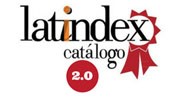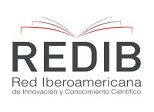Work Environment Satisfaction in the Economic, Administrative and Trade Sciences Department of the University of the Armed Forces
DOI:
https://doi.org/10.69890/hallazgos21.v5i1.396Keywords:
Work environment; Economic, Administrative and Trade Sciences Department; University of the Armed Forces.Abstract
At present, strategies on personnel management and development are the most important factors that allow the achievement of institutional objectives. Within this field, there are processes that intervene directly, such as training, remuneration, working conditions, motivation and organizational climate. The human factor constitutes a vital element for the development of the processes of any organization. To analyze the satisfaction of the work environment in the Economic, Administrative and Trade Sciences Department of the University of the Armed Forces, a quantitative study was carried out, to present proposals for solution. The sample was composed of a total of 134 teachers to whom a survey was applied. The questionnaire was composed of 14 questions, distributed in 11 modules that integrate information on the factors that influence the degree of teacher satisfaction in the department, such as the relationship with peers and superiors, recognition, physical environment, supervision and participation in decision making. The Multiple Correspondence analysis was performed. The results confirm the impact of the set of factors such as the relationship between colleagues and supervisors. It is concluded that the physical environment and the recognition for their work influence, in a special way, upon the degree of teacher satisfaction.
References
Consorcio de Organizaciones Privadas de Promoción al Desarrollo de la Micro y Pequeña Empresa (COPEME). (2009). Medición del Clima Laboral para IMF´s. Recuperado de https://sptf.info/images/medicion_del_clima_laboral.pdf
Esparragoza, D. J., Sánchez Bejarano, C., & Martínez Díaz, D. (2014). Diferencias del clima laboral entre empleados contratados por outsourcing y empleados directos: evidencia empírica de la zona norte de Colombia. Universidad & Empresa, 16(26), 277-295. Recuperado de https://www.redalyc.org/articulo.oa?id=1872/187232713012
Ali Giraldo, W.A., Romero Reales, I., Vizcaíno, C.A., & Ceballos Ospino, G.A. (2012). Estudio del clima organizacional en una empresa prestadora de servicio de vigilancia y seguridad privada. Clío América, (11), 99 – 122.
Robbins, S. P. & Deras Q., A. (1996).Comportamiento organizacional: teoría y práctica México:Prentice Hall Hispanoamericana.
Sánchez, L. (2010). ¿Qué es el clima laboral?. Recuperado de https://www.emprendepyme.net/que-es-el-clima-laboral.html
Visbal Pérez, E. T. (2012). Características de un espacio virtual para la capacitación en la calidad. Caso: Universidad Simón Bolívar. Revista de Tecnología de Información y Comunicación en Educación, 6 (2).
Visbal Pérez, E. T. (2014). Clima organizacional para una cultura de calidad. Orbis. Revista Científica Ciencias Humanas, 10(29),121-144. Recuperado de https://www.redalyc.org/articulo.oa?id=709/70932556007
Published
How to Cite
Issue
Section
License
Los artículos enviados a la Revista Científica Hallazgos21 deberán ser totalmente originales e inéditos.
Los autores son los responsables de los textos y las imágenes incluidas en los artículos y no necesariamente reflejan el pensamiento de la editorial o de la Pontificia Universidad Católica del Ecuador, Sede Esmeraldas (PUCESE).
Los autores disponen cederle a la Revista Científica Hallazgos21 todos los derechos inherentes para la edición, publicación y distribución o divulgación del mismo.
Se autoriza a las revistas firmantes de los acuerdos de Encuentros de Revistas Latinoamericanas para reproducir en parte o totalmente los artículos con la sola mención de la fuente claramente señalada.







